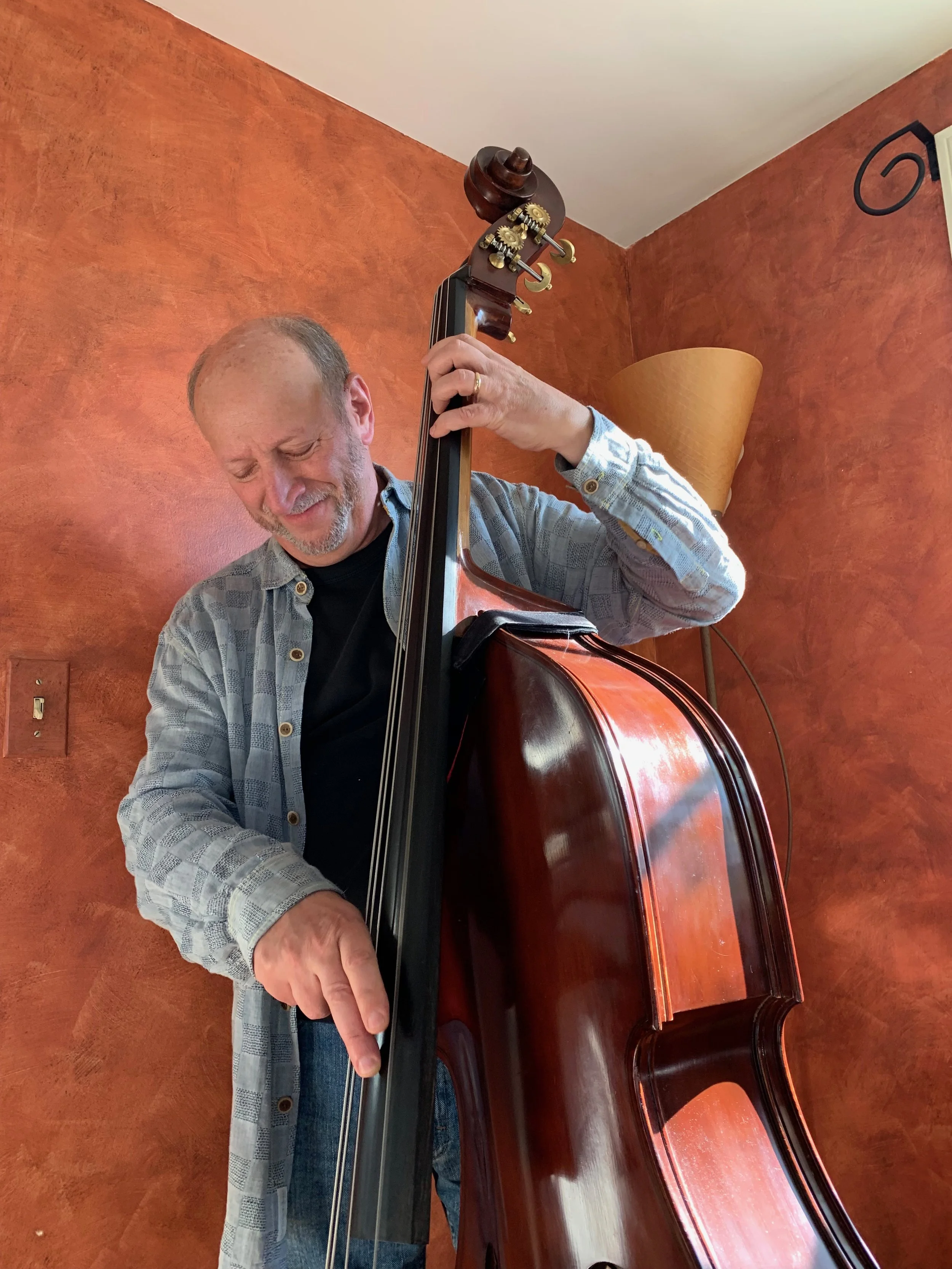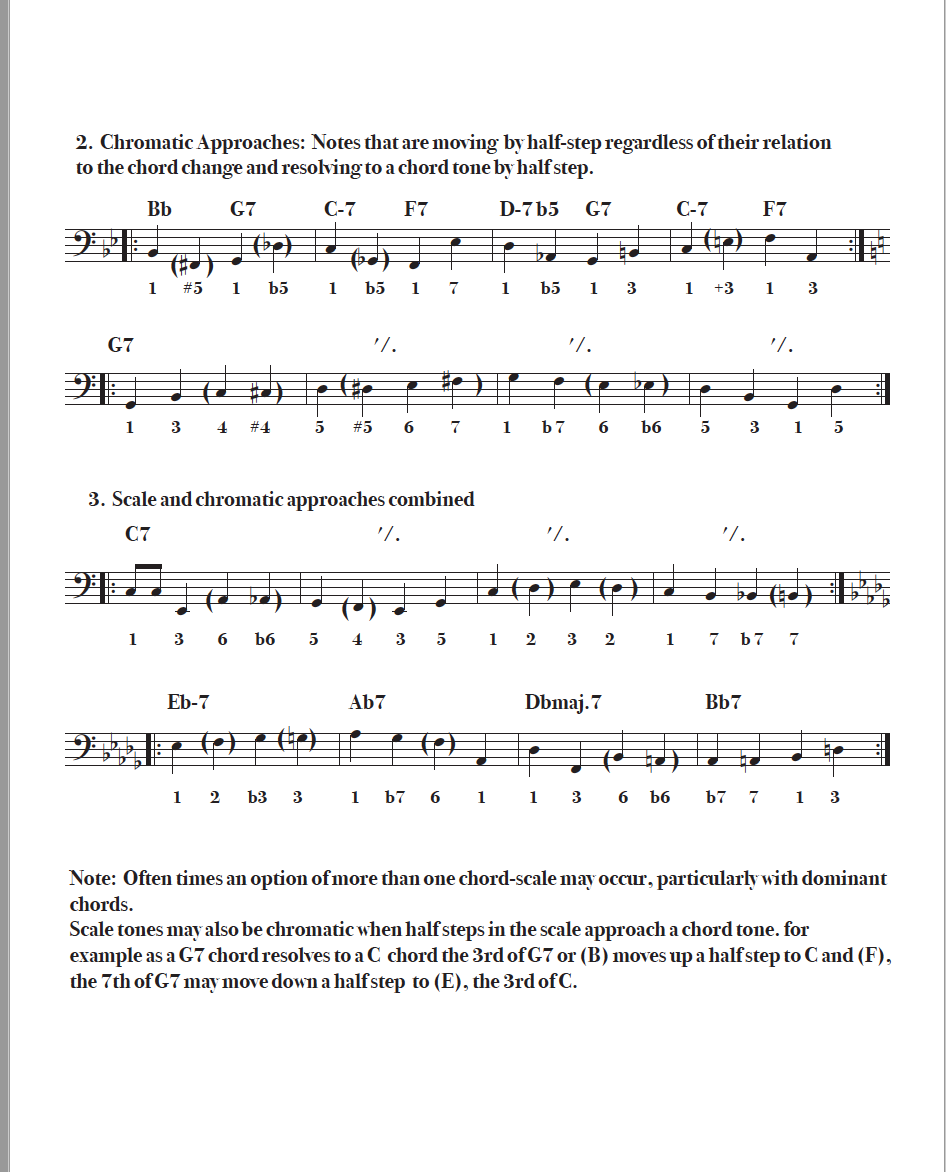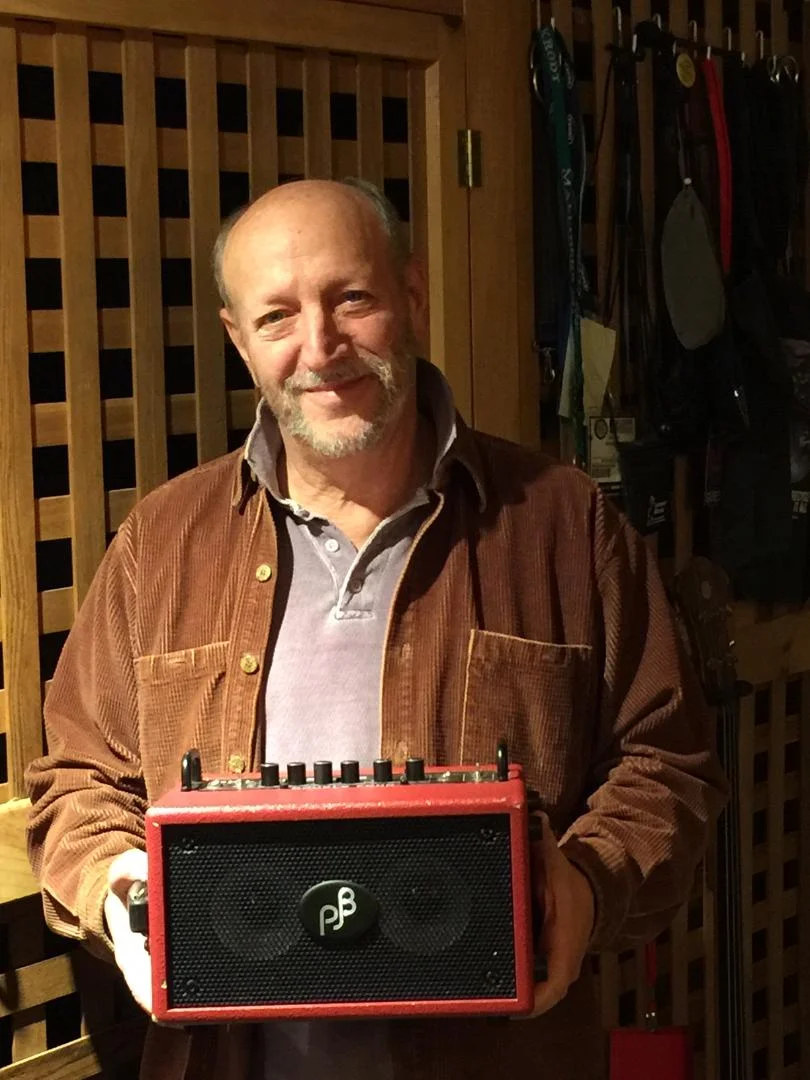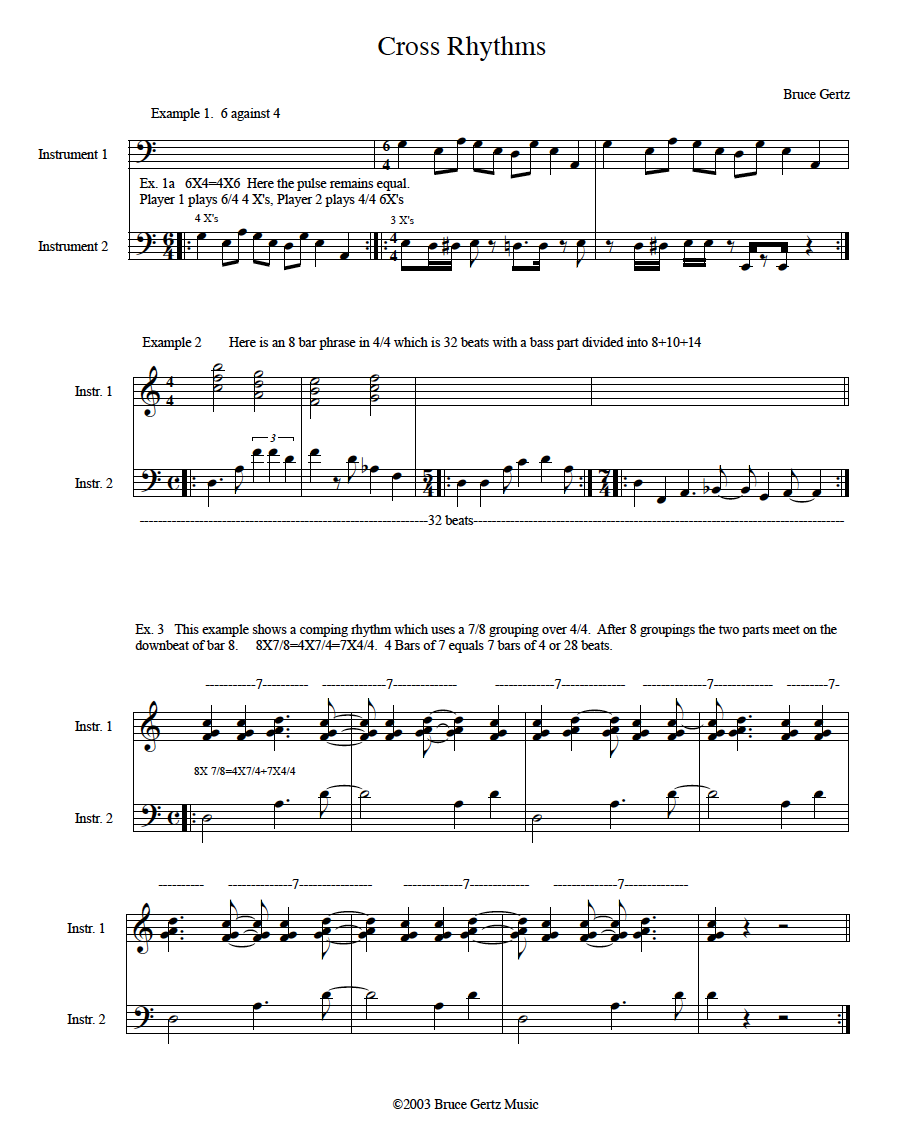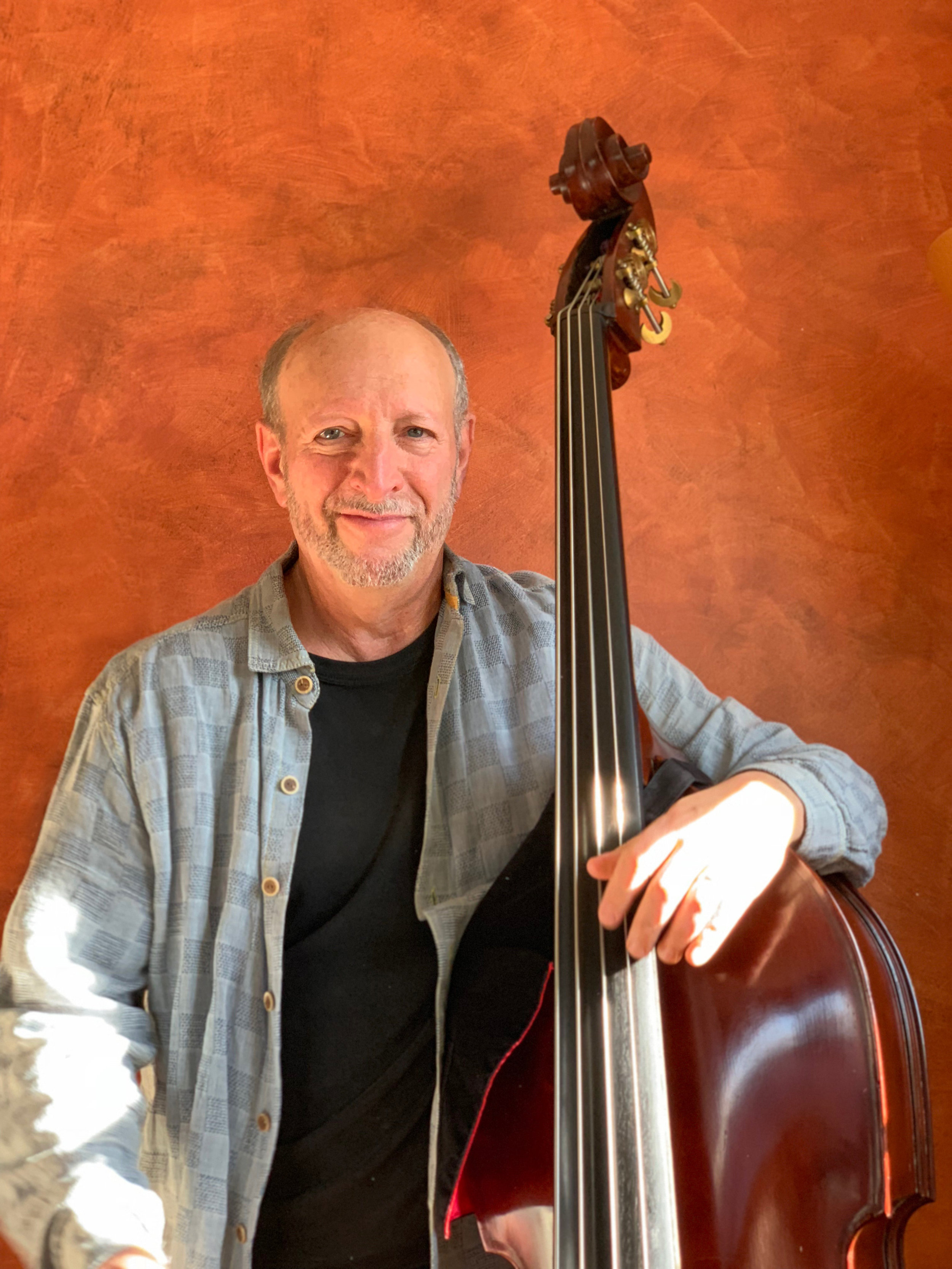Bruce Gertz with his Kolstein, Lafaro, Busetto Travel Bass https://kolstein.com/product/kolstein-busetto-removable-neck-model-travel-bass-wtravel-trunk/
This is from the 1982 publication Walkin originally written in 1979
This is from the 1982 publication Walkin originally written in 1979
The basic concepts for walking bass foundation are the same in the 21st century as they were in the 17th century. Most often the roots, fifths and octaves are desirable for clear harmonic outline.
What has evolved is the ability of more people/musicians to accept dissonance or simply more color.
My goal as a bassist is to supply the foundation of the form, harmony and groove. As a creative artist and composer, I find myself straddling the boundaries between basic and more creative bass lines. Depending on the musical situation, It is important to be responsible to the front line, (horns, vocals, soloists, melody players). Leading a band and playing originals can be an opportunity to be more creative and free from fundamental playing. I use the term “Anchor Management“ referring to balancing creative, more adventurous with fundamental bass playing.
As a composer and improviser, the pursuit of expanding my ability to hear and play different lines or substitute bass notes has been an evolving one.
21stCentury, Jazz Bass Lines by, Bruce Gertz
Aspiring improviser/Bassist Challenge: How to be a reliable bassist while filtering in unorthodox, less generic bass parts.
My journey in this endeavor began in the 1970’s while on a 6 night/week and Sunday brunch gig for about 3 years.
After thousands of choruses playing basic 2 feels and walking lines, it became clear to me that if I were to continue enjoying this gig, I would need to find ways of using more creative approaches without interfering with anyone’s solos or melodies. Today my goal is the same however my ears have evolved quite a bit since 40 years of doing it. So far I’ve never been fired from a gig and get plenty of calls back to play more. I am either successfully balancing responsibility with creativity or I play only with very tolerant musicians.
Dig This tiny amp.
Along the way it occurred to me that a good number of bebop phrases worked as both 8th notes and quarter note bass lines. This gave me an opportunity to explore and practice bebop type phrases as quarter notes. I now had lines that worked for both walking quarter notes and swing eighth note solos
As jazz musicians become ever more familiar with variations of II V chord progressions, it becomes a common approach to jazz language and as a composer I also find it to be a helpful tool. One common technique that is helpful is something that I call Chord Consolidation. A, II can have a V after it and a V can have a II before it or visa-versa, II V can be just II or just V.
V = II V, II = II V, II V = II and II V = V
Having transcribed many bass lines and solos (all instruments), I’ve learned that substitutions and chromaticism play a large role in jazz line construction and it continues to evolve after hundreds of years. One example of substitution is to use minor II V in place of major II V. Another example is to use a diminished scale over II V. It is also true that harmonic rhythm (beats per chord) can vary while the same phrases work. 16 bars of D-7 Dorian as in So What or Impressions can be treated as D-7 to G7 in a wide variety of rhythmic phrasing.
There are some bebop lines in this melodic, bass line to Donna Lee including a quote from Charlie’s Wig by Bird in bars 20-23
Pedal Points can include a root and upper structure tensions 9, 11, 13 and using different groupings can create interesting rhythms.
© 2009 Bruce Gertz Music
Triplets and fills can work well on walking or 2 feel and offer an opportunity to sneak in something creative. Practice walking 2 measures and filling 2 measures to help gain more vocabulary. Try substitutions and consolidation.
Soloists often use quotes from tunes or players. As a bassist, I like to quote root motion from other tunes. (play Giant Steps over Rhythm Changes 1st 2 measures)
Diatonic Intervals can make very interesting bass lines non-diatonic intervals can build tension.
Many melodic devices are available to us such as intervals, broken triads and seventh chords, modal sequences, tonal super imposition and 12 tone, 23rdchord improvisation. I find the 12-tone zone to be an excellent way to improve your inner ear. A 23rd chord is spelled 1, 3, 5, 7, 9, 11, 13, 15 ,17, 19 ,21, 23 and can be constructed many ways. One way to get started hearing the tone rows is to begin with the following formula from the bottom up. C., E, G, B, /D, F#, A, C#, /F, Ab, Bb, Eb. Or Cmaj.7, DMaj.7, Bb7sus4/F, (or F-7(4 no 5) (I maj.7, II Maj. 7, bVII 7 sus4/2nd inversion). It can also be viewed as 4 triads, C, B min, A aug., Eb sus4
Cross Rhythms are another creative avenue much less explored than walking bass lines. Practicing ideas involving various subdivisions of larger phrases can improve one’s overall sense of time and also help relate to what many contemporary drummers play. This concept is good for escaping the 4/4 and 3/4 comfort zones and expanding one’s rhythmic perception. It can also help with math skills.
Blues with a bridge having 32 beats divided 7 + 5 + 4 twice = 32 beats or 8 bars of 4/4 Soloists can play in 4/4 over it or jump on the other cross rhythm, groove.
The last 8 measures contain a metric modulation from 3/4 to 4/4 with a half note equaling a dotted quarter note.
Each musical situation will require different degrees of fundamental and less fundamental bass parts. Learn your artistic boundaries. Be responsible and get called back.
B.G. with his Kolstein, Lafaro, Busetto Travel Bass
It’s a great little bass with a killer tone!
